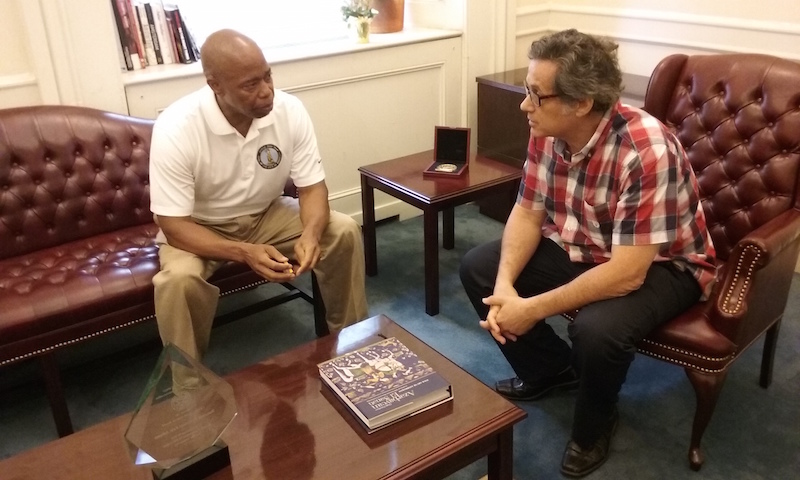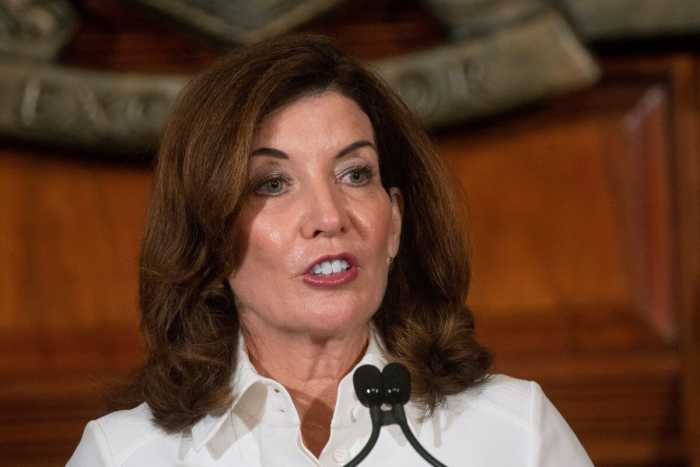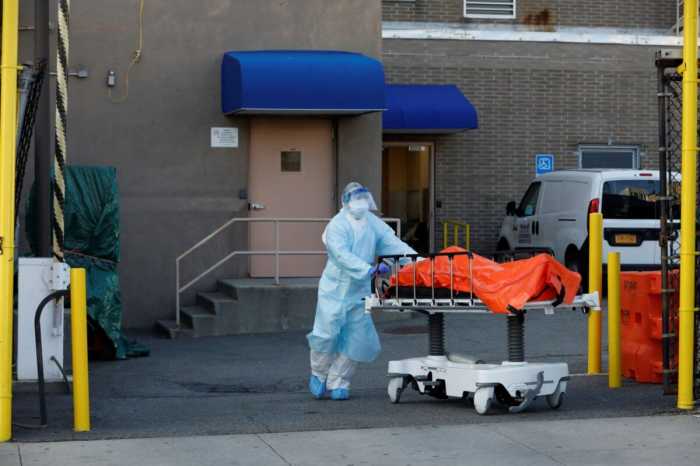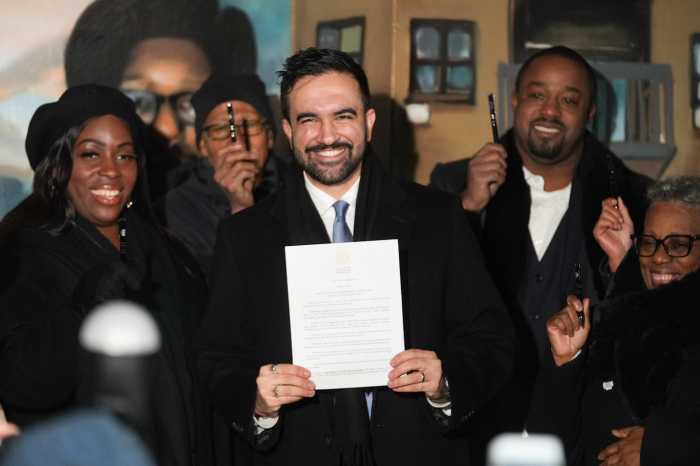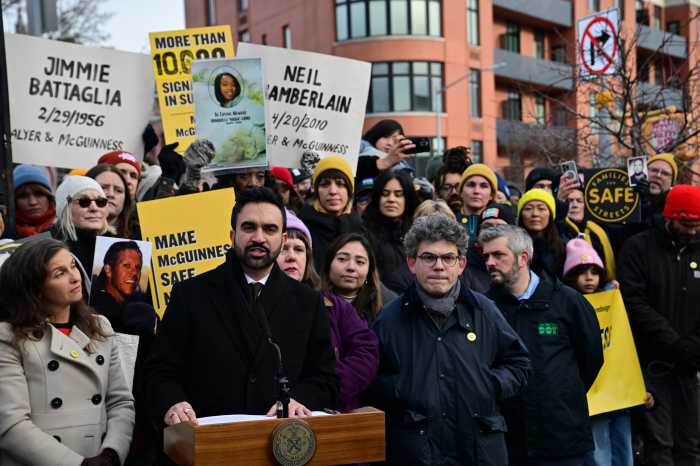1. The Fall of Andrew Cuomo
As 2020 ended, former Governor Andrew Cuomo was riding the crest of his popularity garnering statewide and national praise with his daily televised press briefings on the pandemic and his being seen as a stalwart of facts and science in the face of then-President Donald Trump’s dithering and denial.
But as the year turned to Winter 2021, things began to unravel for Cuomo, starting with an investigation by Attorney General James that found that the Cuomo administration and the Department of Health failed to be forthright on COVID-19 deaths in nursing homes. Making matters worse, public reports of Cuomo’s multi-million dollar book deal for his autobiography on the COVID-19 crisis further sparked the ire of New Yorkers.
Than sexual harassment allegations against Cuomo surfaced, beginning with former aide Lindsey Boylan’s public disclosure on Twitter. As other women came forward to accuse the governor, and calls for his resignation mounted, he directed James to open an investigation into the alleged actions. That led to the Aug. 3 report that outlined accusations made by 11 women.
This led to Cuomo’s announced resignation and the tenure of Andrew Cuomo as the 56th governor of New York state ended at 11:59 p.m. Monday night, Aug. 23, after 11 years at the helm of New York State.
2. Kathy Hochul becomes the first woman governor
New York State’s first woman governor took office on Aug. 24. Characterizing herself as fiercely independent, Kathy Hochul is a former U.S. representative who later became Andrew Cuomo’s lieutenant governor. In that role, she was largely limited to ceremonial duties, though the governor would often call on her to lead certain initiatives, such as the Enough is Enough campaign.
“A new era of transparency will be one of the hallmarks of my administration. To me, it’s very simple … We will focus on open, ethical governing that New Yorkers will trust,” Hochul said in her inaugural address.
3. Eric Adams Elected Mayor
In the face of a seemingly unstoppable politically progressive city, Brooklyn Borough President Eric Adams bested a contingent of progressive opponents, along with moderate city administrator Kathryn Garcia to win the Democratic nomination to succeed term-limited Mayor Bill de Blasio. He then easily beat Republican Curtis Sliwa in the general election to become mayor-elect.
Adams will become the City’s second Black mayor. A retired NYPD captain, Adams comes from a working-class background. He won the election building a coalition of of Black, Hispanic and moderate white voters.
4. Ranked Choice Voting
Ranked Choice Voting, which was approved by City voters in a 2019 referendum was utilized for the first time in the 2021 citywide primary.
RCV allows for voters to rank up to five candidates per office in order of preference rather than voting for just one candidate. If a candidate receives more than 50% of the first-choice votes they are the winner. If no candidate earns more than 50% of the first-choice votes, then the votes will then be tallied in rounds.
At the conclusion of each round, the candidate with the fewest votes will be eliminated. If the eliminated candidate had been the first choice on a ballot, the vote then transfers to whoever was the second-choice on the ballot. The process continues until there are two candidates left. The candidate with the most votes is the winner.
5. City Council Elections
The New York City Council welcomed more than 30 new members due to term-limits as well as new borough presidents in all five boroughs, while more than $120 million was spent in taxpayer money through the public financing for hundreds of candidates.
This includes a first-ever woman majority in the City Council, with 31 women heading to the 51-member body.
6. Noncitizen voting
In a landmark decision that divided the Council, a majority voted on Dec. 9 to allow noncitizens to vote. Though controversial, the Our City, Our Vote bill will make 800,000 green card and work visa holders eligible to register to vote in municipal elections. There were debates over its constitutionality, as well as how the bill could overwhelm the Board of Elections with an entirely new voting process just after ranked choice voting was introduced. Still, many councilors, including the bills chief sponsor Ydanis Rodriguez (D-Washington Heights), believed that the right to vote for these residents was long overdue.
“The federal law already says state and city, you are the one that has the power to decide who votes in your election. And the New York State Constitution never used the word only when they mentioned that those who are citizens have the right to vote in New York,” Rodriguez said.
7. De Blasio pulls Gifted and Talented from Public Schools
On Jan. 13, Mayor Bill de Blasio announced that this would be the last year of Gifted and Talented, the program that puts four and five-year-olds into accelerated learning classes via an entrance test. The goal was to replace it with more inclusive programming that does not include a controversial test for children.
“We will also engage communities around how best to integrate enriched learning opportunities to more students, so that every student – regardless of a label or a class that they are in – can access rigorous learning that is tailored to their needs and fosters their creativity, passion, and strengths,” said DOE spokesperson Barbot Miranda.
Supporters of G&T, especially in lower income communities, expressed disdain for the decision and would later ask the mayor-elect Eric Adams to reverse the decision.
8. Rikers visits and the Less is More act
Several state legislators, along with Public Advocate Jumaane Williams visited Rikers island jails after the death of an inmate. What they witnessed set off a ripple effect in the city and state legislatures to call for the passage of the Less is More act—a bill that would reduce the jail population by freeing some parolees.
“People are stuck inside for days, for weeks, for months without a court hearing, without even being able to get transport to court, without medical care. I met a transgender person who is locked away in a unit with male colleagues. She deserves dignity. I also talked to another person who is HIV positive, who is not getting their medication. This is another death on our hands. I just witnessed an attempted suicide,,” Assemblymember Jessica González-Rojas said.
Governor Hochul signed the Less is More bill on Sept. 17, which earned her support from protesters calling for the state to “free them all.”
9. Adrienne Adams
To end the year, City Council member Adrienne Adams declared herself the winner of the highly contested race for council speaker. After both she and opponent Francisco Moya both declared a win with a majority of supporters, the behind-the-scenes campaign shook out in Adams’ favor. The council will vote officially in January, but Adams’ list of supporters is definitive.
“I am honored to have earned the support and the trust of my colleagues to be their Speaker,” Adams said. “Our coalition reflects the best of our city. We are ready to come together to solve the enormous challenges we face in order to not just recover from COVID but to build a better, fairer city that works for everyone.”
10. New York Loses One Congressional Seat
The U.S. Census Bureau finished tallying the 2020 Census on Monday, April 26, 2021 and determined that New York State will be losing one congressional seat in the U.S. House of Representatives.
New York’s populace count came in at 20,201,249 residents with 14,502 people overseas, but its apportionment count was 20,215,751 with 26 apportioned seats, one less than last year.
Senior census expert, Kristin Koslap, said that New York lost its congressional seat by just 89 people.
“The last seat went to Minnesota, and New York was next in line. If you do the algebra equation, it determines how many they would have needed, and it’s 89 people but that’s if you hold the population of all other states constant,” said Koslap.


